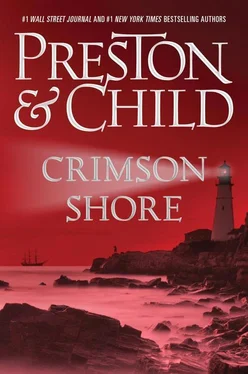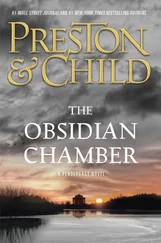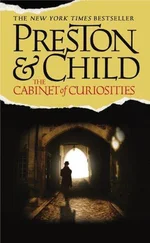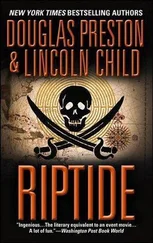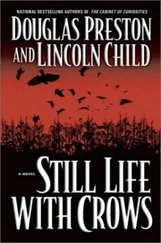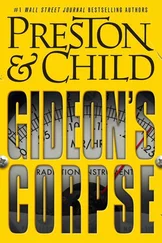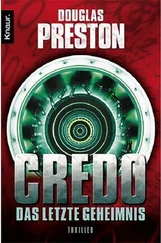Constance looked at her with a drawn face. “I must understand them if I’m to understand why my sister would be attracted to this... filth. You see, Mrs. Jobe, whether these inscriptions are poppycock or real, it is the intention to do wickedness that is this world’s true evil. But if they are indeed fraudulent, it could help my case with my sister... when I find her.”
Two hours later, Constance sat back in her chair, blinking. The microfiche machine was a wonder of hideous 1980s technology, seemingly designed to cause blindness through prolonged use. Why computers had not been introduced here, when the Historical Society was apparently flush with money, was a mystery. Perhaps they did not wish to make it easy to review these terrible trials.
But after all that, the transcriptions of the Salem witchcraft trials had proven a dead end. All too clearly, the “witches” who were put on trial were innocent. There were, however, a few instances in which — reading between the lines — Constance got the decided impression that there were actual witches, both male and female, involved in the witchcraft trials: not as accused, but as accusers, judges, and witch-hunters. It made a degree of sense: What better way to sow fear and hatred in a community, while at the same time disguising one’s own connection to evil?
It was time to visit the Cage.
She called for Mrs. Jobe, who led the way. The Cage was housed in the building’s basement: a small vault, its floor, walls, and ceiling constructed out of steel bars, with a single locked door. Inside were two shelves of ancient books — one along each wall — and a small table and lamp in the center. The air was cool and dry, and Constance could hear the running of a forced-air system. A nearby wall sported various environmental and atmospheric monitors and dials, including a turning drum that, no doubt, registered temperature and humidity. It was a dark and sinister space that — in high anachronism — was festooned with sophisticated digital instruments.
The archivist locked her in, with another admonishment to wear gloves at all times.
There were not many books on the shelf labeled “Occult & Miscellanea” — no more than three dozen. Most she recognized from Enoch Leng’s library at 891 Riverside Drive, which had a deep section on poisons and witchcraft. She began perusing the titles, taking a mental inventory: There was the famed Malleus Maleficarum (The Hammer of Witches); Nider’s Formicarius ; Reginald Scot’s The Discoverie of Witchcraft ; the French classic De la Démonomanie des Sorciers ; the fabulously obscure Lemegeton Clavicula Salomonis ; and the dreaded, shadow-haunted Necronomicon , bound (although no doubt Mrs. Jobe was unaware of it) in human skin. She was already familiar with the contents of these, and knew they would contain nothing to help her decipher the Tybane Inscriptions — if indeed there was a decipherment to be found.
But at the end of the shelf stood a row of extremely old, obscure, and dirty volumes. She glanced at these, finding most to be irrelevant. But the very last book on the shelf, pushed back from the others as if almost deliberately hidden, was an untitled volume that was not, she discovered, a book at all, but rather a manuscript. It was in Latin, titled Pseudomonarchia Daemonum (The False Monarchy of Demons), dated 1563.
She laid it on the small table and carefully turned the pages, surprised by the abundance of detailed illustrations. It appeared to be a kind of grimoire or list of all the demons alleged to exist: sixty-nine in total, with their names, offices, attributes, symbols, and what they could teach the person who raised them in an unholy ceremony. The paper crackled under her gloved touch, and she had the sense no one had examined the manuscript in a very long time.
She leafed through it, looking for matches to the Tybane symbols. Most of the symbols represented the demons themselves, but a few were symbols indicating movement, travel, directions, and place.
As she paged through, her eye caught one symbol that, in fact, had a match with the Tybane Inscriptions:

It was translated as Obscura Peregrinatione ad Littus (A Dark Pilgrimage to the Southern Shore).
A diligent search turned up a second Tybane symbol:
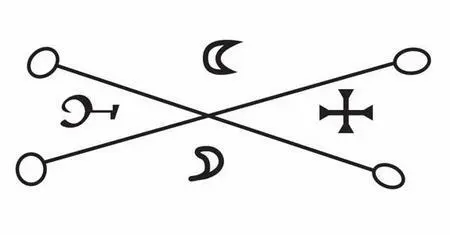
The translation was Indevitatus , meaning “unavoidable,” “inevitable,” “imminent.”
With greater interest now she continued combing the text, page after page. Toward the end she hit upon two more symbols.
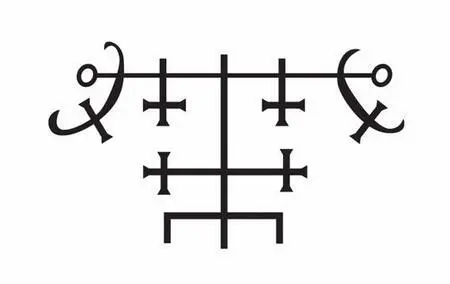
This first was the sign for the demon known as Forras, and she mentally translated the Latin text:
The Thirty-First Spirit is Forras. He appears in the form of a strong man in a fair human Shape. He can give the understanding to men how they may know the virtues and poisons of all herbs. He teaches the Arts of Law in all its parts. If desired he makes men to live long, and to avoid discovery of their evil. His Seal is this.
The seal was identical to a symbol in the Tybane Inscriptions.
The other symbol of interest was of another demon called Morax, and the accompanying text translated as:
Morax is a great and mighty prince of darkness, and when he puts on the shape of a man, he shows out dog’s teeth, and a great head like to a deformed ape, and drags a devil’s tail; he makes wonderful cunning, incites lewdness, and will lie with any woman he so desires; he has a great thirst for the blood of man and he revels in the viscera of those he kills. His Seal is this:
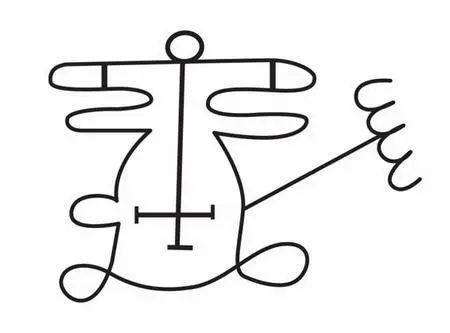
The Tybane Inscriptions, as she understood it — and as the body of McCool gave evidence to — comprised a series of five symbols. Four had a match in this book: the avatars, apparently, of four demons.
Near the end of the manuscript, she came across the final symbol of the Tybane Inscriptions:
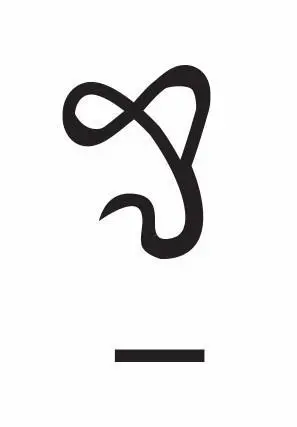
The Latin inscription was Errantem Locus , meaning “wandering place.”
Constance paused, looking up from the manuscript. There was still a lot more to decipher. But she was now sure of one thing: the Tybane Inscriptions were genuine. They were not the product of a crazy fantasist. They had been created by someone truly dedicated to Satan and the worship of the dark arts.
Sergeant Gavin manned the tiller again as the incoming tide bore the boat forward, deeper into the salt marshes. Once again Pendergast sat in the bow, consulting a map and moving only to point directions, leading them up a seeming infinitude of channels.
Gavin wondered what the heck Pendergast was doing again in the marshes. But he kept his mouth shut. He realized a man like Pendergast was the kind who simply did what he wanted, without explanations, apologies, or justification. Nevertheless, he was convinced this would end up a wild-goose chase. It seemed obvious that the killings of the historian and the lawyer were banal, most likely the work of drug addicts trying to cover up their robberies with symbols, which were known to at least some locals familiar with the story of the Tybane Inscriptions. Pendergast had given him some nonsense about looking for the Gray Reaper. But as he eyed the bulky metal detector lying athwart the skiff’s seats, poking out of a partially zipped-up bag, he wondered: What was Pendergast going to do with that?
Читать дальше
